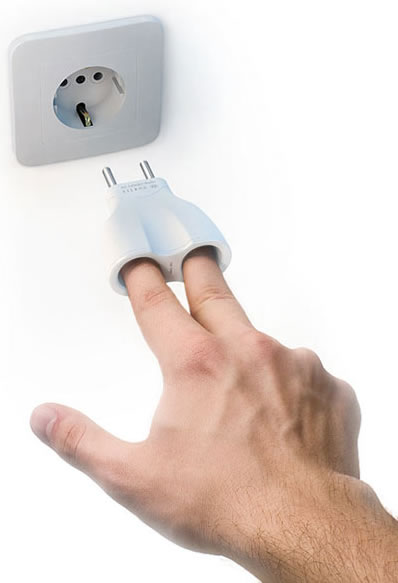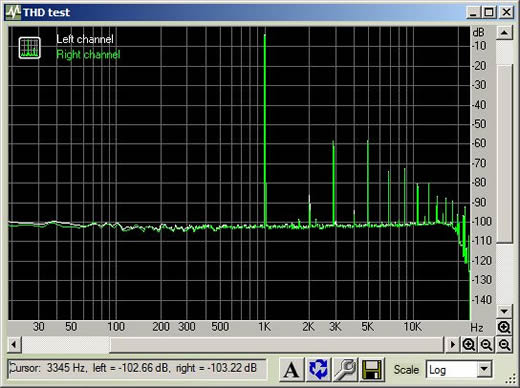Power supply
Complains about noise caused by PSU’s are not uncommon.
I'm using a laptop with an Edirol UA-1Ex usb sound card, when my computer is plugged to AC I hear some noise on the speakers, Moreover when I do something cpu intensive tasks I hear more noises (while cpu is working hard). If the AC adapter is unplugged I don't hear any noises.
http://www.hydrogenaudio.org/forums/index.php?showtopic=66474&hl=
Buying a better (not necessary expensive) PSU solves these problems.
The faith in the benefits of a linear power supply are strong.
So strong people buy one to power the PC.
Of course they report great benefits on the audio forums.
The funny thing is that even if you supply 12V DC using a linear PSU , on the mobo there are all kind of voltage regulators as different components need a different voltage.
These are switchers indeed (SMPS).
Even if you are using a linear power supply to power the PC, the components are still powered by SMPS.
An alternative is to drive the sound card by a separate PSU to shield it from the dirt going on the power rails of the PC.
Invariably a linear PSU is recommended; a switched one is considered an audiophile crime.
Take for instance the EMU 0404 USB. Replace the power supply and the performance increase a ton. Same with the Squeeze box. But really both of these products should be applauded for the price performance ratio.
J. Gordon Rankin
I've done a lot of measuring and listening to different supplies with the Touch and other SB devices.
My major conclusion is that they have relatively little to do with the quality of power reaching the circuitry in side. They have far more to do with the noise injected back into the power line which can get picked up by other devices in your system.
The switching supplies almost all inject a certain amount of noise back into the line, but linear supplies can vary WILDLY as to how much noise gets injected into the line. It is NOT true that linears are noiseless, some will inject far more noise into the line than a good switcher.
Switching and Linear Power Supplies
The cost and weight of “magnetics”, that is inductors and transformers,
can be relatively high, particularly when the frequency at which they
operate must be low. Classically, a power supply operating at 50Hz
(the mains supply in Europe for example) needs to be relatively large,
heavy and expensive. How much better power supplies could be if they
could run at a rate of 100’s of kHz. Indeed they would be better: the
faster that the circuit operates the less the size, the lower the cost of
the magnetics that it needs. Hence the commercial pressure to develop
a new kind of power supply: the switching power supply.
All new things win in the market place when they have just sufficient
functionality, and crucially, lower price. But if they can add a benefit
at the same time, then their adoption will be rapid. A switching power
supply manages all three and its additional functionality is the ability
to operate from 115V to 250V without user intervention.
In consumer electronics the art and manufacture of switching power
supplies is so advanced that rarely does a manufacturer bother to design
a new one. Stock switching power supplies in consumer electronics are
today a commodity item provided by the subcontractor: you may have
your product assembled in the Far East and the contractor will provide
his own low cost power supply for your product.
Switching power supplies have enabled low cost, good quality consumer
audio and, together with Class-D chips, a 7.1 surround sound home
theater may be purchased for less than the price of the early DVD
players.
Why, then, not use a Switching Power Supply every time? Sadly, the
very things that enable the switching supply to work, namely high
operating frequency, good efficiency and low cost magnetics, prevent its use in high precision, very low noise circuits. The high frequency aspect
radiates electro-magnetic noise in the vicinity and the high efficiency
means fast slew rates and high currents, which again contributes to
high emissions. The unit may be enclosed in a metal box, the IO may
be inductively snubbed, but experience shows that despite great efforts,
the noise will somehow break out and be detectable in the low noise
circuity.
Resonessence Labs Invicta user manual
The whole issue of Linear vs. Switched Mode supplies is supremely occulted and obscured in high end audio.
Generally there is a tendency to go for "belly-feel, blackwhite" (see Orwell 1984) and uncritical duckspeak of "linear good, switched mode bad".
This does not help a complex topic.
For example, linear supplies contain resonant systems formed by the mains transformers parasitic inductance, rectifiers capacitance and other parasitics. These circuits produce substantial amounts of burts of HF noise in 100/120Hz intervals. This noise can be as large or larger than that "kicked back" into the mains by a switched mode supply designed for audio use and with sufficient filtering on the mains side.
The latest generations of switched mode supplies use a variety of techniques (e.g. valley switching, resonant mode) that aggressively minimise EMI and noise at the source. Employing some basic "audiophile" ideas in an SMPS (e.g. a well implemented film bypass on the main high voltage input cap) can reduce noise dramatically.
By their very design requirements to pass EMI SMPS's rarely conduct EMI/RFI across the power supply, most linear supplies may as well be transparent to anything above a few 100Hz.
Of course, low end, "commodity" type SMPS often have filtering that is totally inadequate on both input and output and are noisy as heck, but that is not because they are SMPS per se, but simply because they are made as cheap as possible.
Given the same budget at the design point I find that using a well designed SMPS gives lower noise on both sides than a linear supply. Of course most SMPS start with a budget that is 1/10th or less of that which would be needed to produce a most basic and cheap linear supply. Such SMPS's work in that they provide power and pass EMI Agency Requirements, but they do little else.
Coming full circle, modern PC's, streamers etc whatever are full of local Switched Mode Supplies that power some part of the circuit, often they are even designed into chip's themselves.
Adding a linear supply to such systems may make things worse than using a decent SMPS, it may make it different, or sometimes even genuinely better. But it is NOT because "the evil SMPS has been removed", because it has not...
One might wonder if having a PSU working at 50 or 60 Hz is realy benificial.
Amir measured several PSU’s
He measured them where it counts, the analog output of a DAC because that is what we hear.
Indeed there are measurable differences but as he pointed out, most of them are below -120 dBFS.
Makes one wonder if this is audible at all.
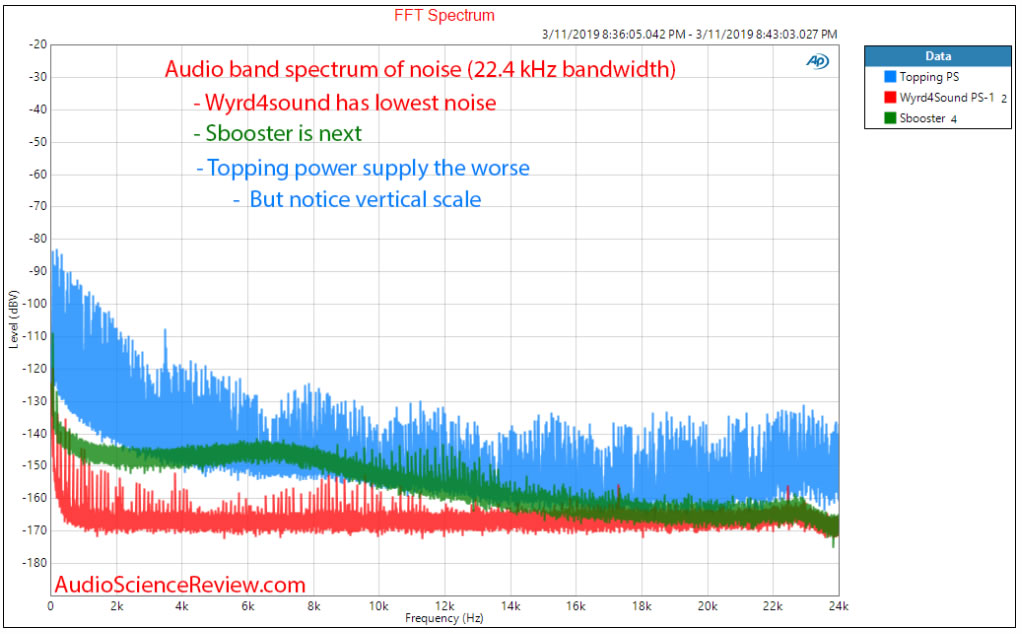
Do you need linear power supply for DACs? - Audio Science Review
Battery
If a PSU is such a troublesome beast, why not use a laptop.
Unplug the mains and you are running on pure DC!
A loop back (sound card out in to sound card in) using RMAA
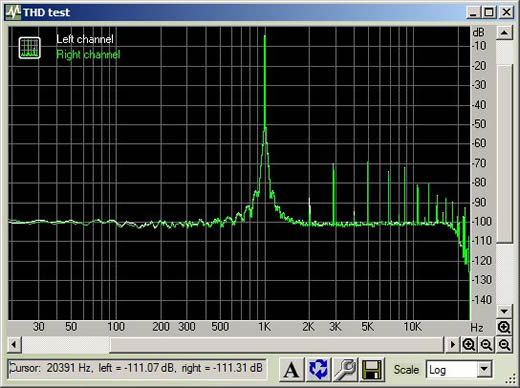
This is really horrible. Switching to battery power do gives you a clean DC source but at the same time the power saving kicks in generating a lot of distortion.
There are reasons why disabling power saving schemas is often recommended!
AC/DC
There are DACs with battery power.
No, not because it is a portable but because sound quality improves when using the pure DC from a battery.
Not everybody agrees.
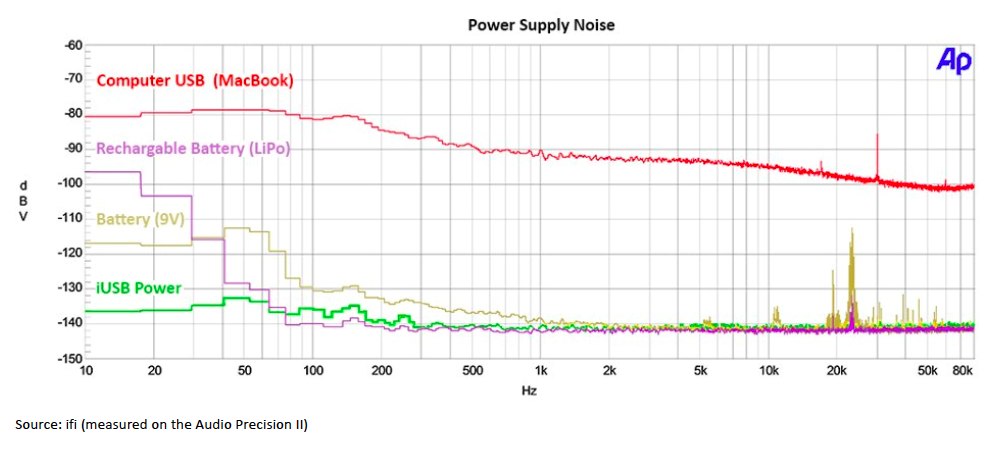
Have a look at the measurements below comparing the iFi iUsb Power to the USB Port on a Laptop, running from battery (charger disconnected), optimised for audio and idling (doing nothing)…
When playing music this is even worse.
For completeness we also include dry cell and rechargeable batteries1, as these are often hyped as “ultimate” power sources…
Source: Why a USB Power Supply? - Thorsten Loesch
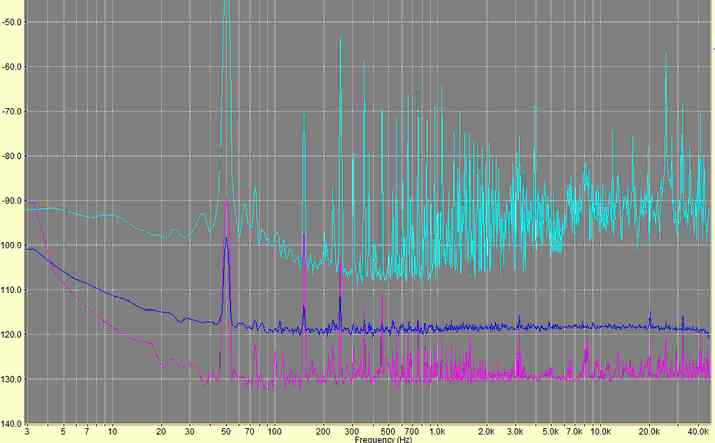
The unloaded battery noise is the pink plot. It is indeed 10dB lower than the blue trace, which was made off a discrete low-noise regulator. However, increasing load current to 35 mA yields the light blue trace for the battery: at least 20dB worse than the regulator!
Source: Simple Voltage Regulators - Werner Ogiers 2004
